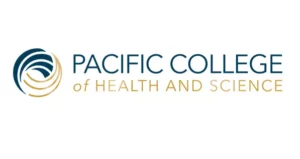The battle with cancer can be daunting and traumatic. Family members, caregivers and patients are asked to endure the difficulty and uncertainty of treatment and recovery. For many patients, added physical pain may develop from the cancer or from treatments.
Understanding Cancer Pain and Its Sources
Cancer pain is complicated because it can arise from a variety of sources. It can come directly from a tumor that destroys or presses on tissues, bones, and nerves. Muscle aches can result from the physical inactivity a patient may experience during or after drug treatments or surgery. Pain unrelated to cancer, such as headache, backache and arthritis, can significantly increase the discomfort of the patient. A massage-licensed therapist can relieve these types of pain, greatly improving the wellbeing of the patient.
Twenty percent of all cancer patients in the U.S. seek massage therapy. Memorial Sloan-Kettering Cancer Center in New York collected patient response to their massage therapy program. After two days, the benefit of massage was evident — anxiety levels dropped 52 percent, pain 40 percent, fatigue 41 percent, depression 31 percent and nausea 21 percent.
Holistic Benefits of Massage in Cancer Care
Treatments for cancer-related pain are varied and are often used in combination for the best results. Massage therapy is one avenue of treatment that permeates a deeper level of healing. Massage reduces stress and anxiety levels, relieves insomnia, decreases nausea, eases depression, manages pain and lessens the need for medication.
The benefit of massage cannot always be measured. Patients can experience a deep sense of wellbeing through bodywork. They gain a sensation of being cared for and being held. As the body fights against disease, stress and trauma accumulate. Massage helps to ease the effects of cancer pain out and away from the body.
Comfort, quality of life and sense of calm and wellbeing — each of which are a benefit of massage — should not be undervalued. These conditions are fundamental in changing a patient’s outlook, which can have incredible healing powers. Feeling and looking healthy are other aspects of keeping a patient’s sprits up. The visually evident benefit of massage includes its anti-inflammatory effect. The sooner patients receive massage after surgery, the less swelling they develop.
Are you interested in becoming a certified massage therapist?
Visit the links below to explore our massage therapy programs at a campus near you:
Ensuring Safe Massage Practice for Cancer Patients
Due to the nature of their disease, cancer patients can be viewed as too fragile for massage, but massage has proven safe and beneficial at many stages of cancer. A responsible, massage-licensed therapist knows the patient’s condition and what is involved in his or her other treatments. The therapist also researches the drugs the patient is taking, as well as the resulting side effects, in order to provide the most complete and beneficial treatment possible.
A massage-licensed therapist can also serve as an early warning system. Therapists occasionally find lumps that have not shown up on medical scans. In addition, massage is often as effective, cheaper, less invasive, more comforting and side-effect-free than drug treatments for common cancer pain problems.
Featured Posts:

